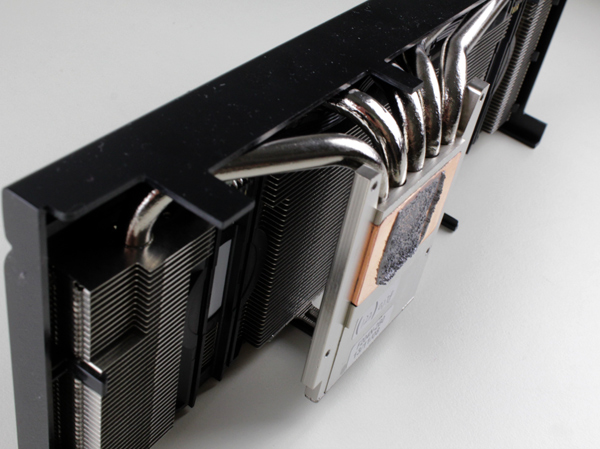Index
In order to keep the overclocked GPU cool, Gainward decided to use the Phantom cooler with a rather hefty heatsink. While Nvidia's reference GTX 780 Ti cooler is quite good, Gainward certainly has a lot of confidence in its own version, but who wouldn’t knowing that this is a massive 2.5-slot wide cooler. However the width of the GTX 780 Phantom card may be its main disadvantage when it comes to enthusiasts prone to building three-way or four-way SLI systems.
The Phantom cooler is definitely impressive. We already had a chance to get acquainted with the new redesigned Phantom cooler. We saw it on Gainward’s GTX 780 Phantom GLH where it managed to provide good cooling performance with relatively little noise. The Phantom’s fans are hidden behind the heatsink so it may trick users into thinking that it’s a passive cooler. Still, if you look through the heatsink fins, you will the three fans. Note that the GTX 780/780Ti Phantom used three fans, but the GTX 680/670 Phantom used two fans. It seems that Gainward decided three fans were a better combination with the redesigned heatsink. After all, the TDP difference between the GTX 680 and GTX 780/780Ti is 55W, which might explain the decision.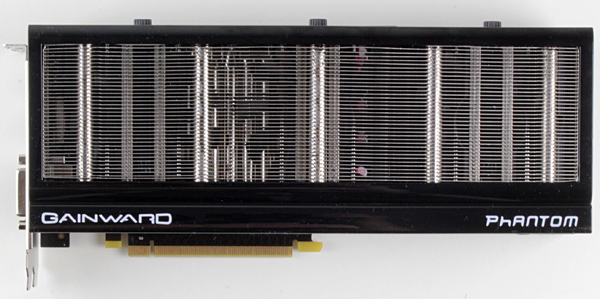
Now for Gainward’s removable fan trick featured in current generation Phantom coolers. The fans can be removed without removing the heatsink or messing with the wiring. You just need to undo a single screw and pull the fan out of the heatsink.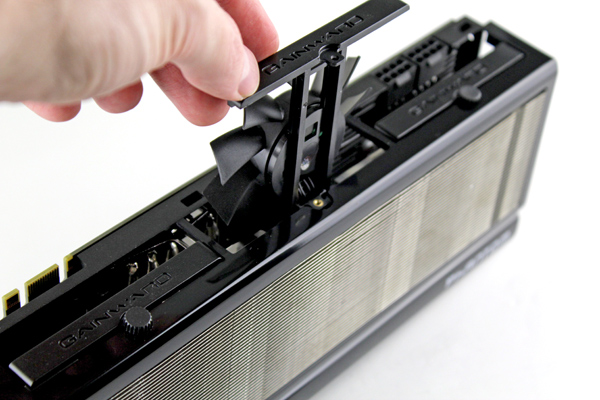
This is possibly thanks to an integrated power connector inside the bay. You can’t fit the fan upside down as it uses a set of rails to guide it down to the connector. Three fans on a hot card with a huge heatsink area attract a lot of dust, so we really love this unique feature, as it makes cleaning the heatsink much easier.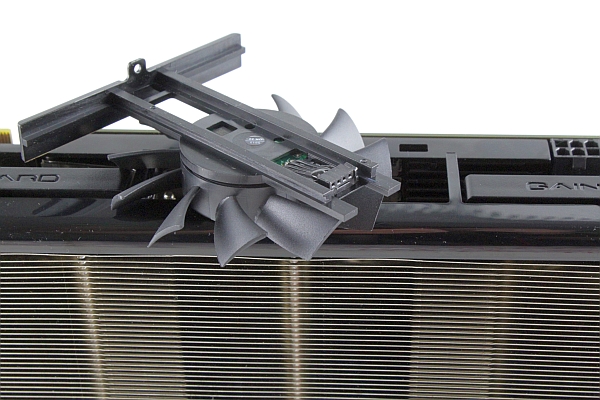
Power Logic PLA8015S12HH fans have a maximum speed of 2729RPM (controlled via MSI Afterburner) or 3112RPM (controlled via ExperTool).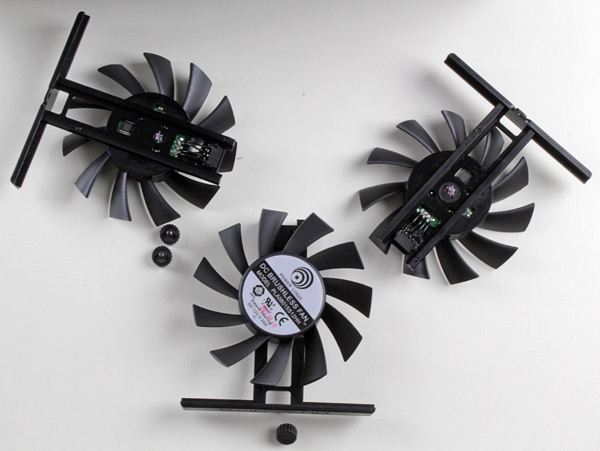
If you decide to take the fan off it will void the warranty on most cards. However, on the Phantom it won’t, and it makes maintenance a breeze. Removing the whole cooler from the card will be an easy task too, and could be done by removing four spring-loaded screws from the card’s back side, but this will void the warranty.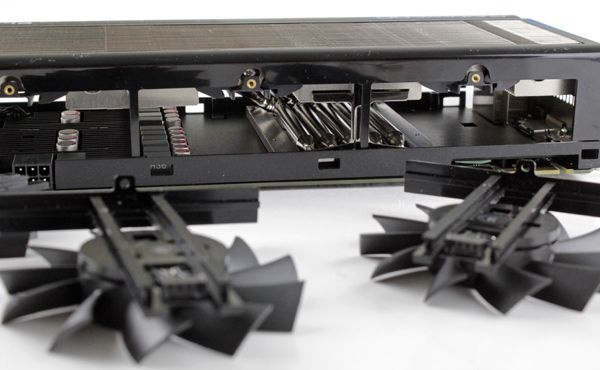
The loudness of the Power Logic fans depends on the efficiency of the heatsink. A well designed heatsink makes their life easier, so the decision to use three fans should result in more airflow at lower RPMs. Aside from the GPU, the fans are in charge of cooling other hot components on the PCB, and on a 250W+ card there are plenty of hot components.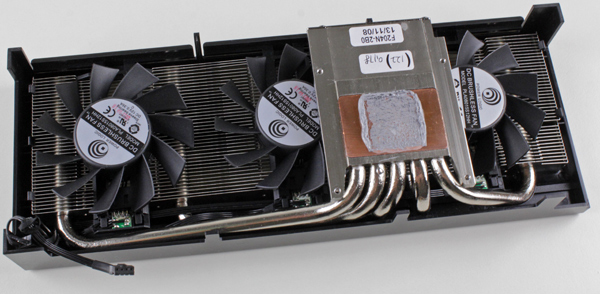
The next pictures shows how cable routing was implemented.
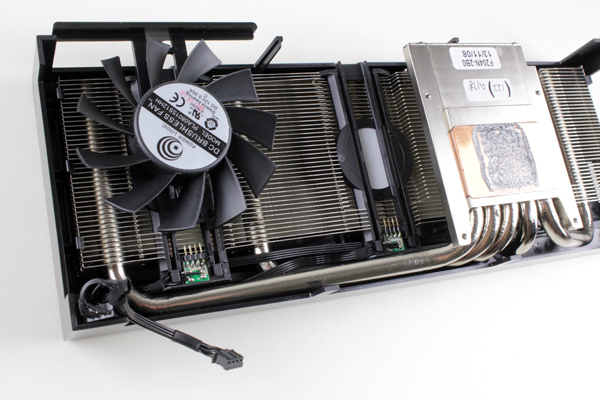
All three fans share the same 4-pin power connector. Setting the RPM manually is easy using Gainward’s ExperTool or any other popular utility like MSI Afterburner or PrecisionX.

The new Phantom cooler employs a five-heatpipe system to transfer heat between the cooler base and the heatsink. The 8mm heatpipes are curved a bit more precisely than in earlier Phantom coolers, so they don’t protrude from the cooler. The welds are very are accurate and look impressive. The GTX 670 Phantom did not feature a copper base, it was an all-aluminium design. That was probably one of the main reasons it did not end up quieter than the reference GTX 670 cooler. Gainward reverted to a copper base with the GTX 780/780Ti/770.